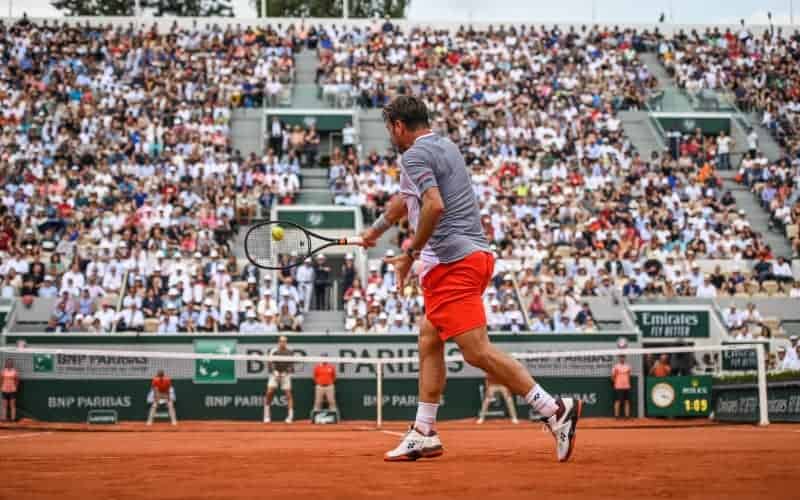Whether you are a beginner just playing for fun or a tennis legend like Roger Federer, you need a proper tennis net to play the game. It is the most critical structure on the tennis court and is responsible for making the game more challenging, adventurous, and attractive to play. If you can’t land the tennis ball in your opponent’s court over the net it doesn’t matter how much power, skill, or speed you possess. The net is one of the most essential parts of a tennis court and for that reason, it needs to have the right measurements.
The standard tennis net dimensions, set by the International Tennis Federation (ITF), has a height of 42 inches (106.5 cm) at the posts and a height of 36 inches (91.5 cm) in the center.
Having the net set up at the right height is extremely important, as not doing so can throw off a player’s whole game. Players practice over and over with a certain net height, and having a set up that is off by even an inch can cause you to miss more shots than normal.
The Height of a Tennis Net
To get a tennis net you need four things: two net posts, a metal cable or cord, a white strap, and a white band. The tennis net should be attached to two side posts at a height of 42 inches (107 cm). At the center of the tennis court, the height of the net should be 36 inches (91.4 cm). The net should be attached to the center of the court with the strap. The strap should not be wider than 2 inches (5 cm) and should be white.
The net is pulled down in the middle by means of a band that is anchored into the ground. The net must be hung in such a way that it completely fills the space between the two poles. The net, of course, needs to be tightly-knit so that the ball cannot get through while playing.
Why Are Tennis Nets Lower in the Middle?
The poles that hold up the net are not wide enough for the net to be at the same height across its length, and the tension is not enough. That is why it lowers a bit in the middle.
That is the physical reason for it but there is also a tactical one – to create a strategic trade-off. Just like in basketball where the corner three is the closest spot to the net to hit a three-point shot from but it also has the hardest angle to shoot from. And just like in track and field where the inner lane is the closest one to the finish line but its curvature is also the toughest one to run on.
Tennis Net Height for Doubles
There is a difference in court size between singles and doubles. The width of the singles court is 324 inches (822.9 cm) and the one for doubles is 432 inches (1097.2 cm).

For doubles tennis matches, the centers of the net posts must be 36 inches (91 cm), outside the doubles court on each side. If a doubles’ tennis net is used, then the net must be supported by two single sticks, at the height of 42 inches (107 cm), the centers of which must be 36 inches outside the singles court on each side. The net posts and single sticks should not be larger than 6 inches or 3 inches respectively, and both should not be more than 1 inch above the top of the net cord.

Crosscourt Vs Down-The-Line
In tennis, there is the thinking of that the harder the shot you make the harder it is for the opponent to return it. And the hardest shot to return in tennis are those down the line along the sideline shots especially when it’s coming off a cross court but consequently it is also the hardest one to make because geometrically speaking it has the narrowest window for a shot and the net is at its highest on the side. That’s why cross court shots are safer because the net is at its lowest and therefore easier to play it over the net.
The net can be on your side during a game or against you and can be a decider in important moments. When you hit the ball just right and it slightly touches the net and completely changes directions or just dies and drops right on the other side. It can change rallies destroy attacking shots and is sometimes unforgiving but in the end, without a net we wouldn’t have the game we love. And differently than in soccer or basketball we don’t want to see the ball hitting it.

